By Nora Lowe
On September 8, the Science Center was cleared of furniture and filled instead with student researchers. This year’s cohort of Summer Undergraduate Research Fellowship (SURF) participants presented more than 80 posters as the culmination of their multiweek experience of rigorous scientific inquiry across nine departments, as well as in collaboration with parties outside the College.
Here, ASN brings you below the SURFace, providing a deeper look into the work conducted by two of these student researchers.
Stochastic Modeling of Orbital Debris Evolution Using Launch and De-Orbit Rates
Cassandra Jin (‘24)
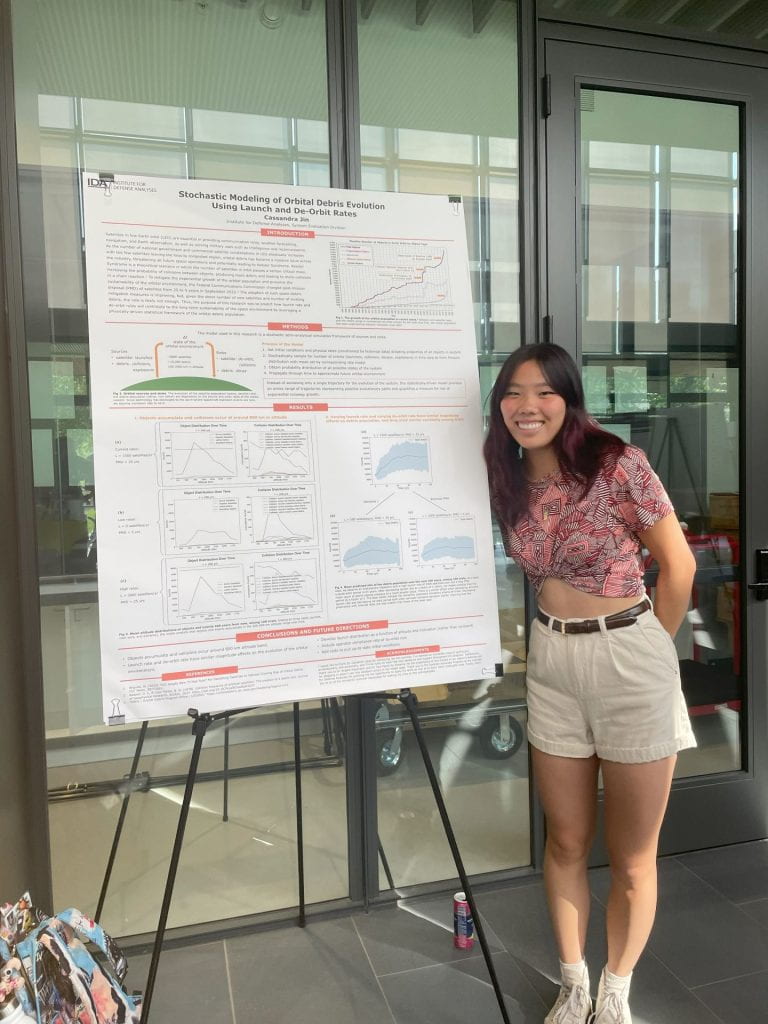
This summer, Jin worked with the Institute for Defense Analyses. Right now, she explains, national governments and commercial companies like SpaceX are sending satellites into orbit to gather information from GPS operation to intel on political adversaries.
But, launching more and more objects into space leads to a problem called Kessler Syndrome. The issue stems from how collisions in space only increase as more objects are sent up, what Jin calls “exponential growth of the orbital population.” Continuing the current pattern of frequent object launches and infrequent object returns as reported by the Federal Communications Commission (FCC), the space environment will eventually become unusable.
There are different methods to determine the probability that objects in space will collide with one another. One method is deterministic, which uses physical characteristics such as size, velocity, and orientation to make predictions. However, reality is not perfectly predictable. Jin says it is analogous to economics, where it is impossible to predict consumer behavior with absolute certainty. “People act irrationally, and the universe is the same way. Models are always imperfect.”
Therefore, Jin focused on a framework of stochasticity, which takes randomness into account. There are over half a million objects in orbit, so the deterministic method runs into barriers of computational power and time. On the other hand, the stochastic method is a semi-analytical simulation framework. For one of the two rate parameters that she investigated, Jin set an average of 1,500 launches per year, and the stochastic model draws from a distribution, which means year one could have 1,400 launches, while year two might have 1,550. According to Jin, this helps us better predict real conditions.
This model has been in development only for a year but can render predictions for a 200-year timeframe. The results show that objects and collisions tend to accumulate at about 800 kilometers. Jin also found that while decreasing launch rate and increasing de-orbit rate both lower the chance of collisions over time, increasing de-orbit rate is less volatile in terms of predictability. This suggests the government should prioritize increasing the de-orbit rate rather than decreasing the launch rate.
Right now, operators can only keep satellites in orbit for up to 25 years after mission completion, but their compliance rate is estimated at 20%. To address this issue, the FCC recently narrowed that designated window from 25 years to five in hopes of curtailing Kessler Syndrome. However, Jin notes, there is no penalty or incentive to increase compliance at the moment, something that could help mediate the issue of noncompliance.
Laughter is the Best Medicine? The Implications of Self-Enhancing Humor in Emotional Sensitivity, Loneliness, and Depression
Allie Hollin (‘26)
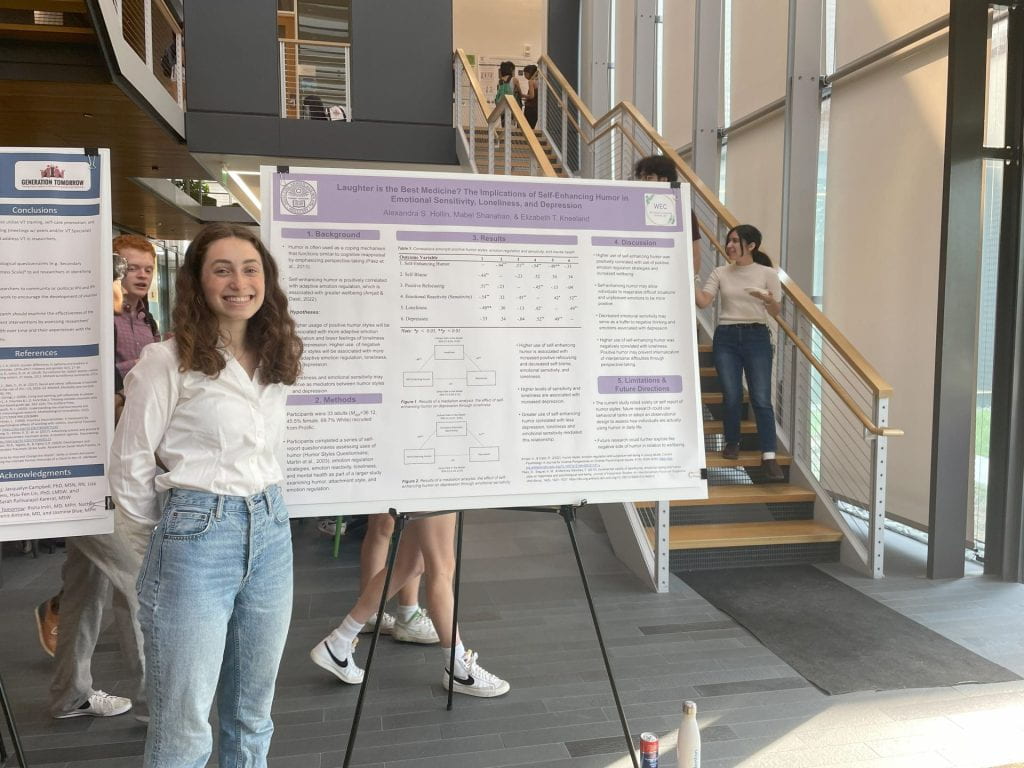
Hollin is a prospective psychology major who focused her efforts in the field of clinical psychology this summer. She developed her study from a curiosity about how humor impacts mental health and the capacity for emotional regulation. There are four different humor styles: aggressive humor (targeting other people), self-defeating humor (making fun of yourself in a negative way, sort of like self-deprecating humor), affiliative humor (making jokes with other people in a positive way), and self-enhancing humor (a more solo act of humor, but still positive towards oneself).
Although all four humor types were investigated, the most significant results came about with self-enhancing humor. In defining this category, Hollin says, “when you’re facing adversity, someone using self-enhancing humor will step back and refocus on the positives rather than ruminate on the negatives.”
Hollin put these factors in conversation with loneliness and depression, too, which were all measured in a self-reported survey taken by 33 subjects. The mean age was 36, and participants completed the questionnaire through Qualtrics remotely across the country.
The findings indicate that people with self-enhancing humor have better emotional regulation strategies that were “more adaptive, rather than maladaptive.”
People who use self-enhancing humor have lower instances of self-blame, greater use of positive refocusing, and are less sensitive, meaning they feel negative emotions less intensely and for a shorter period of time. In addition, self-enhancing humor users are typically less lonely. Loneliness and sensitivity were, expectedly, shown to be correlated with depression.
Hollin hypothesizes that “positive humor, especially self-enhancing humor, which can be thought of as perspective-taking, is preventing you from internalizing something negative that happened to you. When you’re not ruminating on it as much, it doesn’t feel like such a difficulty.”
In the future, Hollin would like to repeat the study with a bigger sample size, look at the negative humor styles to assess them as coping mechanisms, and more closely examine sex-specific approaches to humor.
If you’re interested in doing SURF, check out this webpage to learn more: https://www.amherst.edu/academiclife/student-faculty-research/surf-program
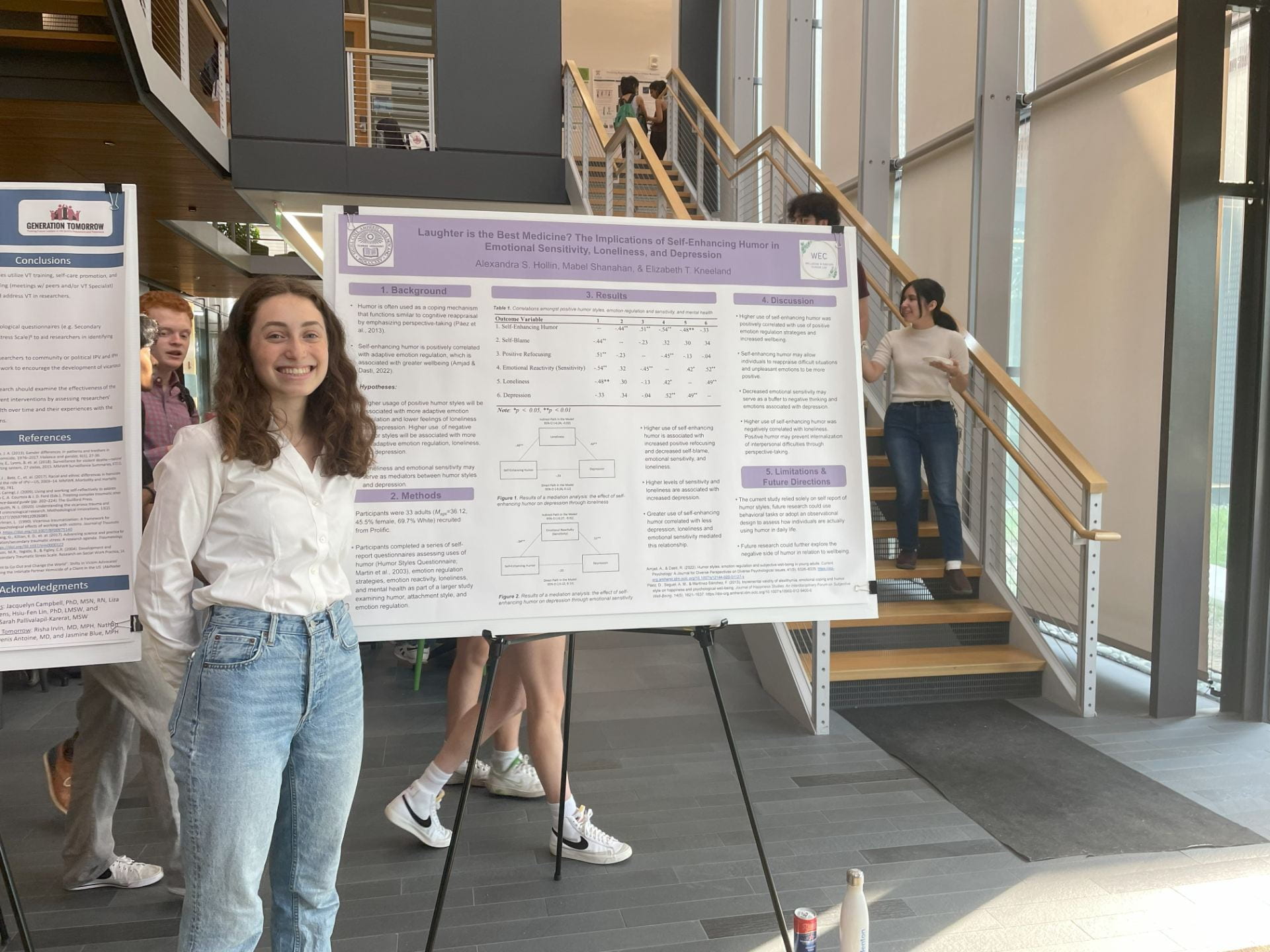
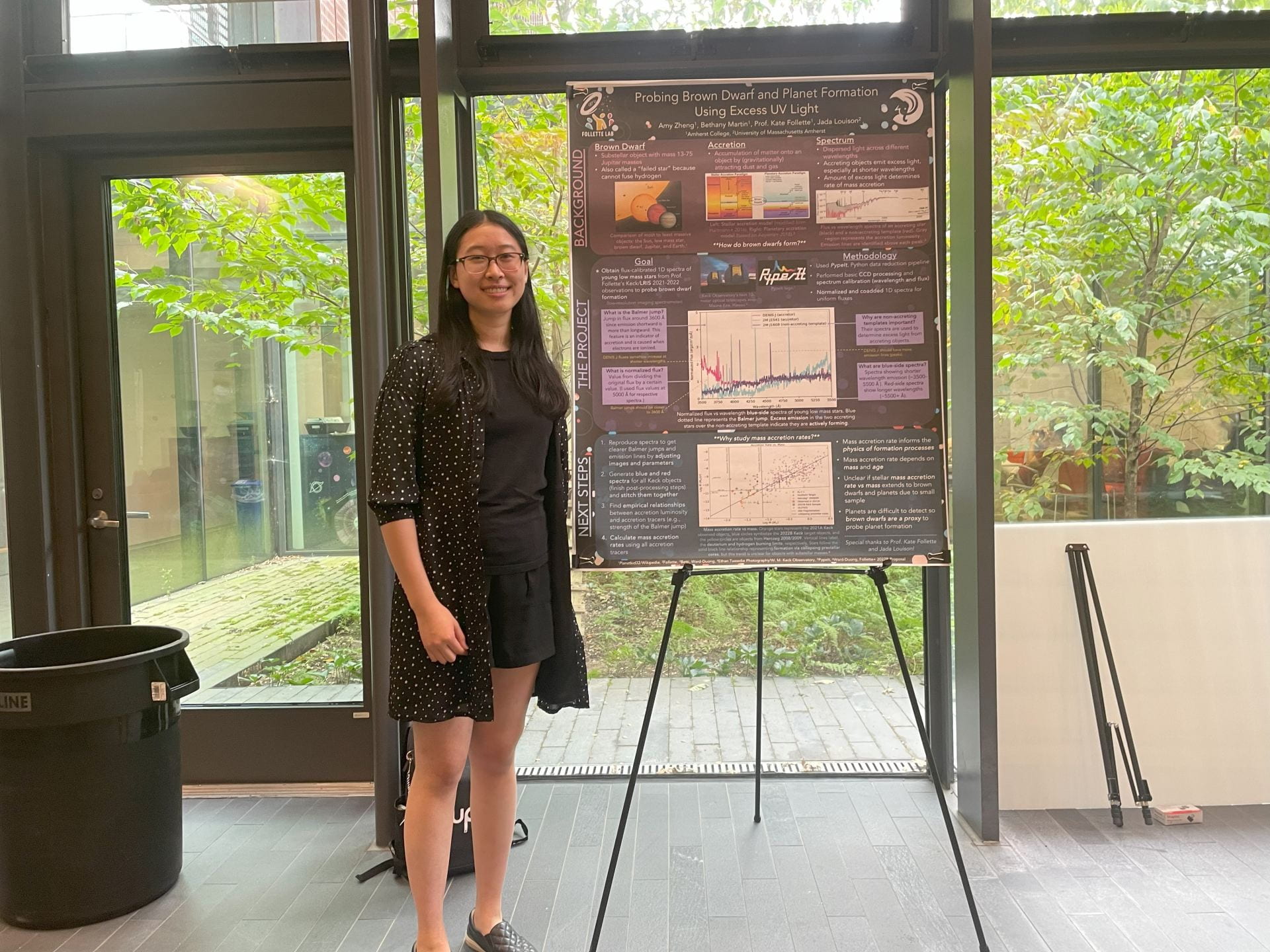
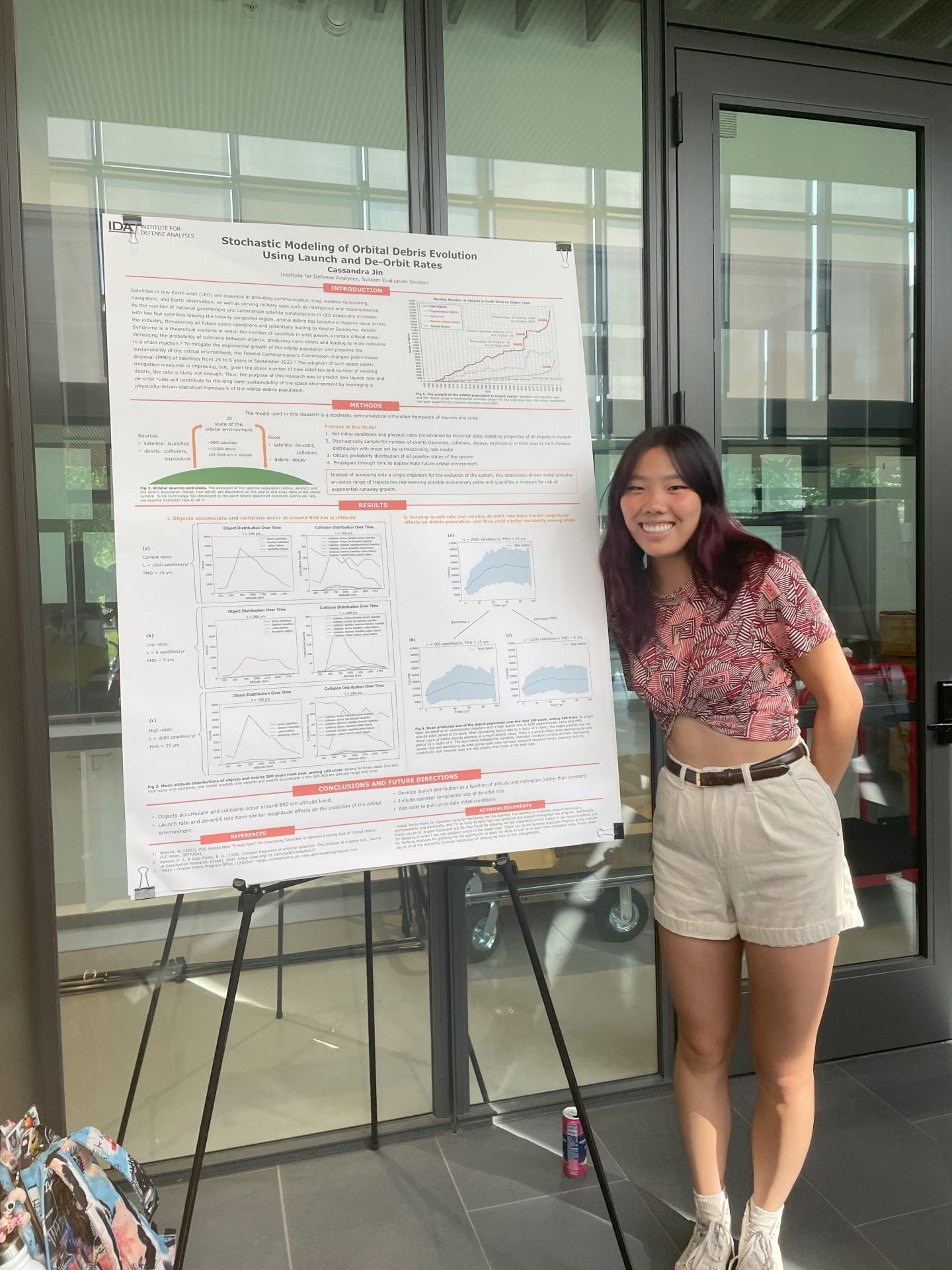
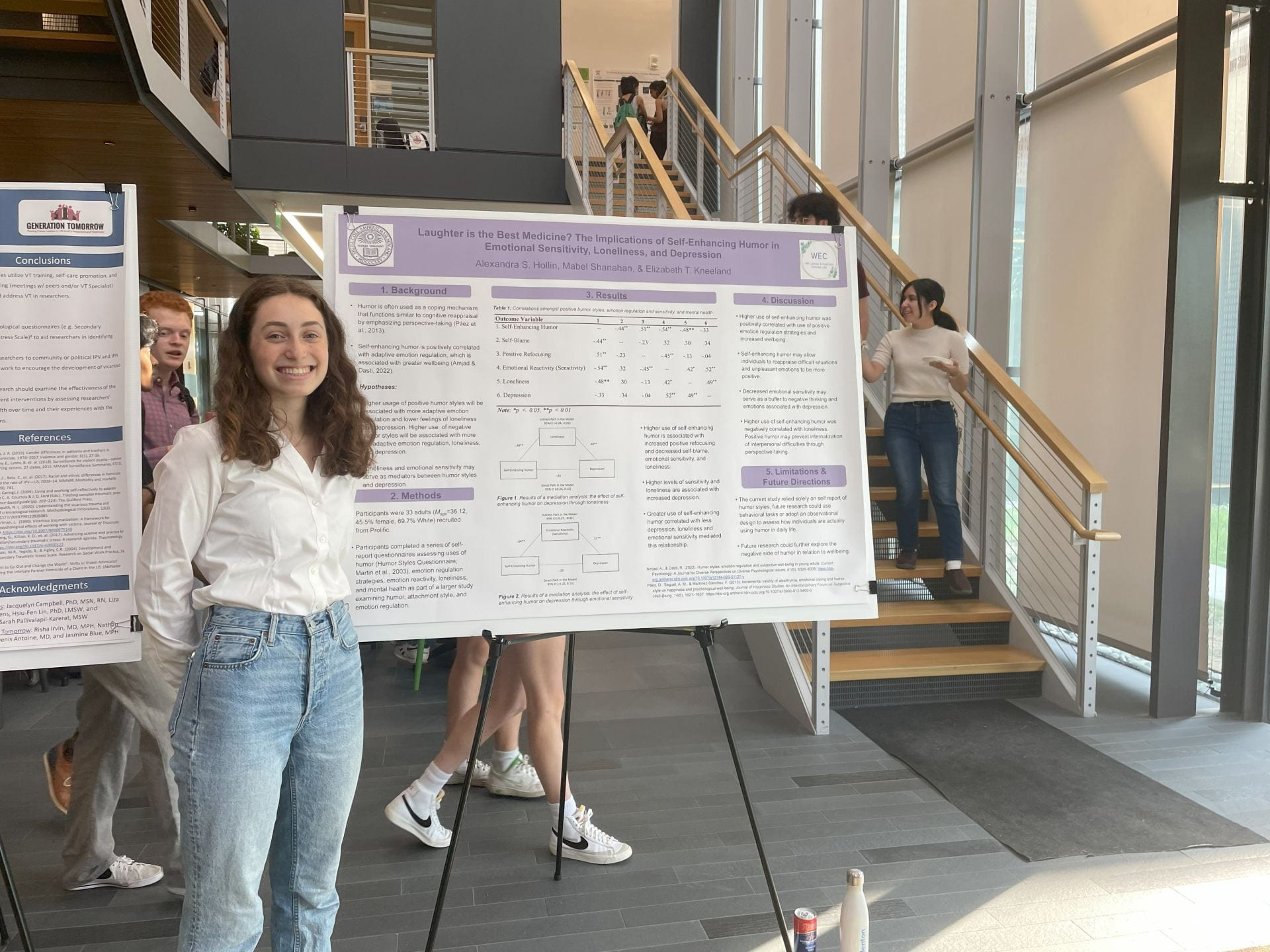
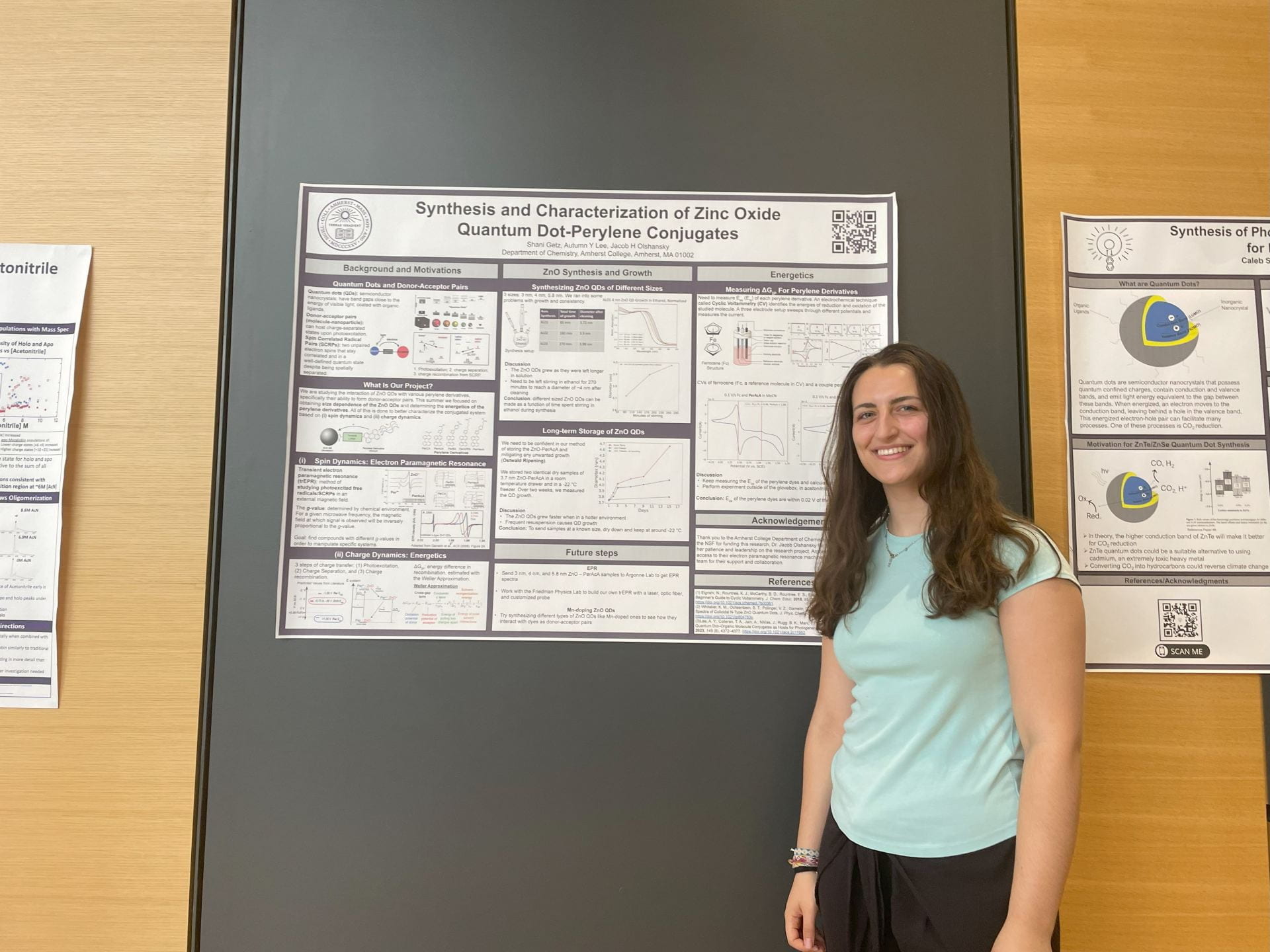
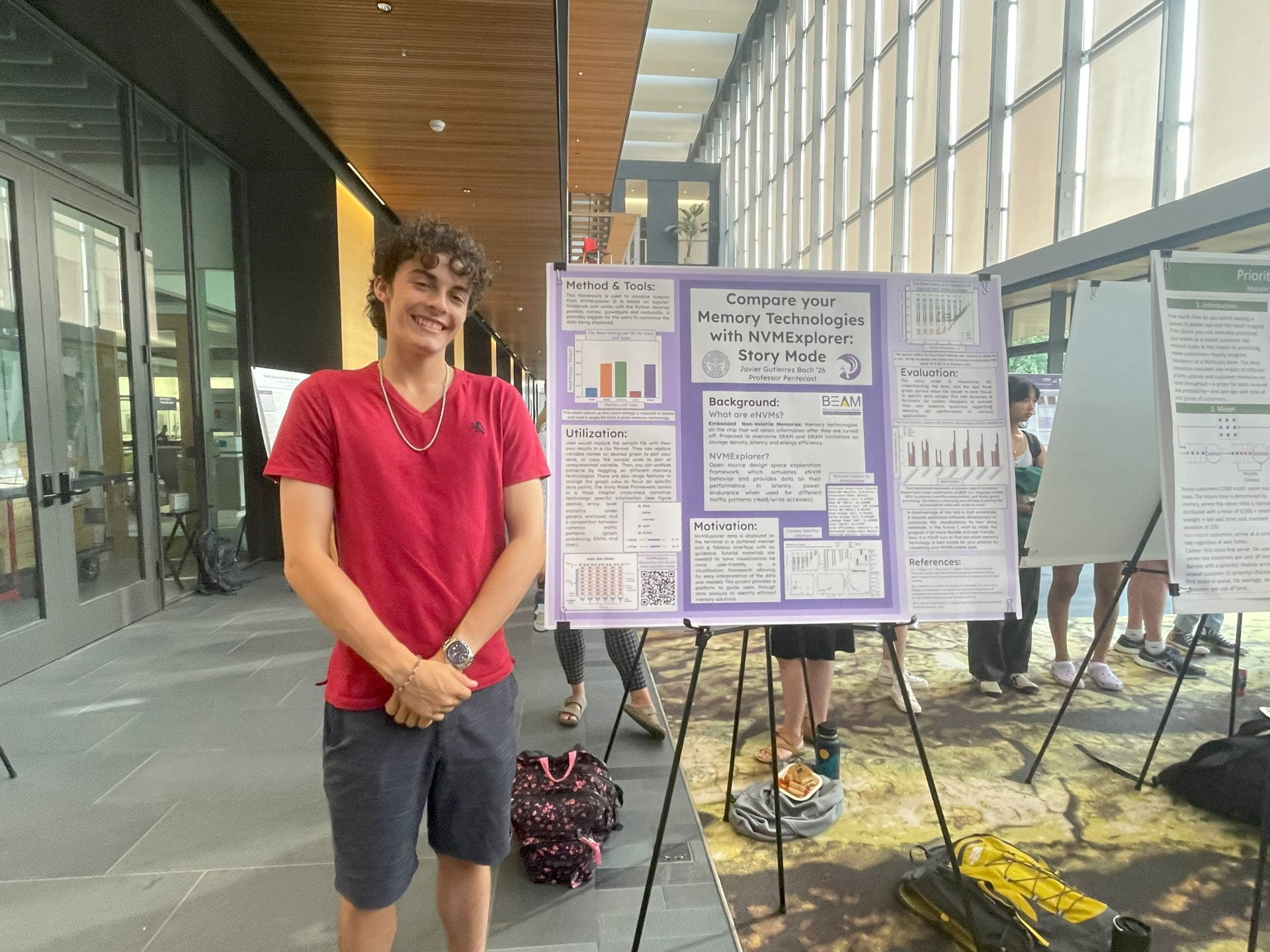
You must be logged in to post a comment.